The Future of Wearable Technology & Cybernetics with Double RFID Chip Implantee Amal Graafstra
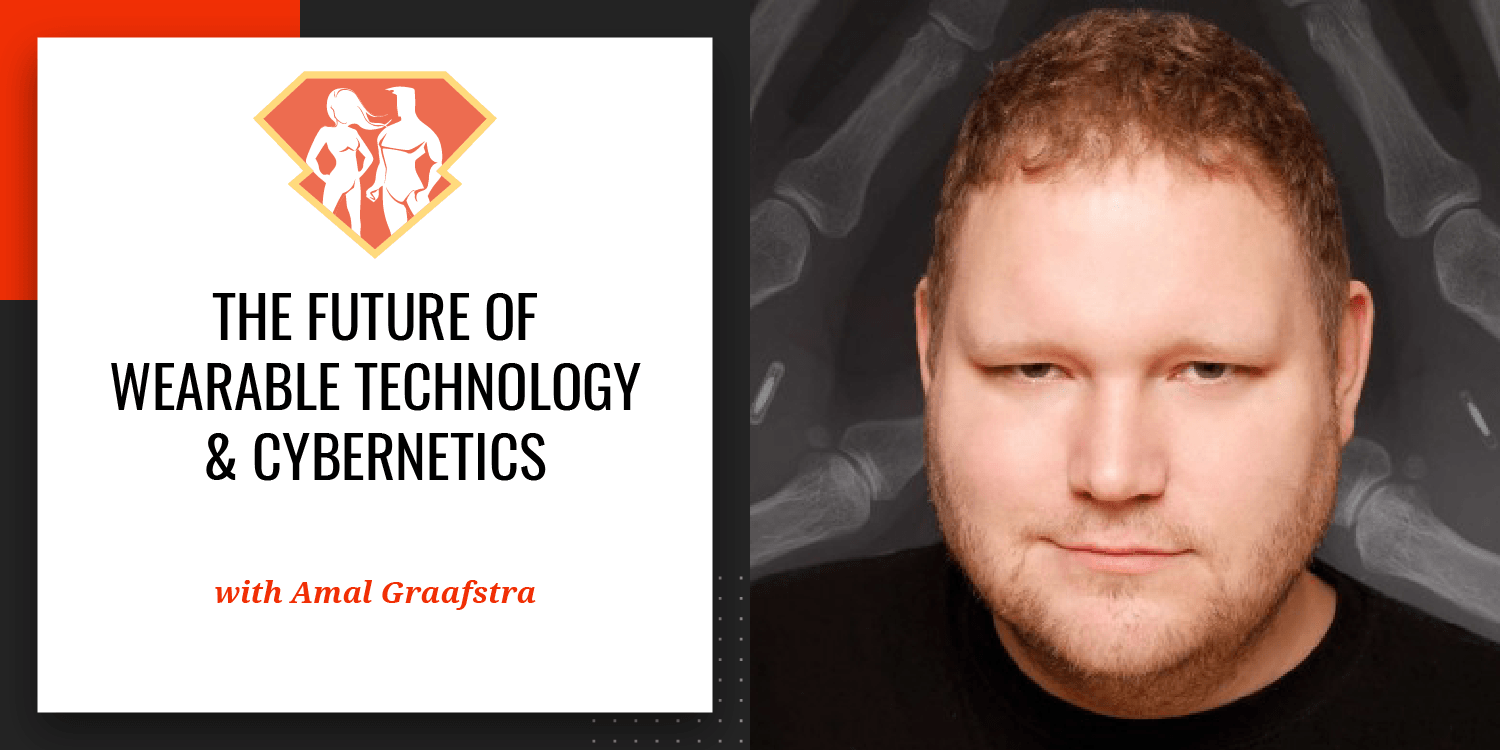
Happy Tuesday, everyone! As you know, The SuperHuman Academy Podcast is a weekly show where we explore all different sorts of ways to improve your performance, whether it’s mental, physical, or otherwise. Generally speaking, we talk about techniques, skills, and strategies. But what about devices? Far beyond today's nascent “wearable technology,” our generation is likely going to be the one to witness what futurists call “The Singularity,” or the idea that man and machine will become inextricably linked as cybernetic organisms. In fact, some experts say that cybernetics are the future of our evolution as a species. My guest this week would not only agree – he’s proving it by example.
From having RFID chip devices implanted in his body as early as 2005, to speaking at TEDx on biohacking, wearable technology, and cybernetics, and authoring a book on RFID chip technology, Amal Graafstra is a thought leader in the subject. Beyond his superhuman implants, he also exhibits quite an impressive level of productivity and work output, running as many as 3 companies at once alongside all his many other projects. He even has a company that will sell you chips and implant kits to get this stuff done at a local piercing shop!
In the episode, we get the chance to discuss both the practical and the theoretical, diving into what life looks like with prosthetic security devices in your hands, as well as a discussion of the security benefits and the future of these types of technology. Though it’s a bit different from our typical interviews, it’s a really entertaining and fascinating exploration of the mindset of someone at the absolute cutting edge of a new leap forward in our evolution as a species. I just know you’re going to love it!
In this episode, we discuss:
- How do people react when they learn that Amal has RFID implants?
- What lead Amal Graafstra towards experimenting with implanting RFID into the human body?
- How RFID chip implantation compares to the other seemingly “secure” systems we use everyday
- An explanation of RFID, NFC, Bluetooth, and other “tracking” technologies
- What can you actually do with the latest generation of RFID implants?
- What does it cost to have RFID chip technology implanted in your body?
- Why does Amal Graafstra have a chip in each hand?
- What is the impact on Amal's daily life?
- What does Amal believe is next in our evolution as a species?
- A discussion of the ethical dilemmas with prosthetics and body restoration vs. body augmentation
- The role of cultural biases in how we view people who are different from ourselves
- What is Amal working on now?
- Are any major “wearable technology” or tech companies looking into implant technologies?
- Thoughts on cybernetics and the future of in-body technologies
Resources Mentioned in This Episode:
- Amal's implantable RFID chip company, Dangerous Things
- Amal's book, RFID Toys: Cool Projects for the Home, Office, and Entertainment
- Science For the Masses
- Grindhouse Wetware
- BioHack.me (Online Forum)
Favorite Quotes from Amal Graafstra RFID Chip Implant Expert:
Here's a TEDx Talk by Amal: Check it out!
Transcript:
Introduction: Welcome to the Becoming SuperHuman Podcast. Where we interview extraordinary people to bring you the skills and strategies to overcome the impossible. And now here's your host, Jonathan Levi.
Jonathan Levi: Greetings SuperFriends. Welcome to the Becoming SuperHuman Podcast. Where we explore all different sorts of ways to improve your performance, whether it's mental, physical, or otherwise. Usually, on the show, we talk about techniques, skills, and strategies, but what about devices? Our generation is likely going to be the one to witness what futurists call the singularity or the idea that man and machine will become inextricably linked.
Some say it's the future of our evolution as a species. My guest this week would not only agree. He's proving it by example. From having RFID sensors implanted in his body as early as 2005, to speaking at TEDx on biohacking and offering a book on RFID technology, he's a thought leader in the subject, but beyond his superhuman implants, he also exhibits quite an impressive level of productivity and work output.
Running as many as three companies at once alongside all his many other projects, he even has a company that will sell you chips and implant kits to get this stuff done at a local piercing shop. In this episode, we get the chance to discuss both the practical and the theoretical diving into what life looks like with prosthetic security devices in your hands, as well as the discussion of the security benefits and the future of these types of technologies.
Though it's a bit different from our typical interview, it's a really entertaining and fascinating exploration of the mindset of someone at the absolute cutting edge of a new leap forward in our evolution as a species. I just know you guys are going to love it. So without further ado, I'm very excited to introduce, Mr. Amal Graafstra.
Amal, welcome to the show. I'm really, really excited to have you on the show today.
Amal Graafstra: Thanks. It's going to be interesting. I'm sure.
Jonathan Levi: Yeah, absolutely. I imagine you have quite a few interesting conversations. I imagine people are very excited to hear about what you're up to and you probably get a lot of shock and awe as well.
Amal Graafstra: Yeah, it kind of, it varies based on age, mostly shock and Oz, kind of for the older set and more enthusiasm and excitement from the younger guys.
Jonathan Levi: Yeah. So do younger people generally kind of get really excited and optimistic when they hear that you're a double RFID implantee.
Amal Graafstra: Yeah. Implantee. Yeah. I would say that the best way to describe it would be older people I tell about it and then they kind of look at you and they go, why would you do that? The first question is why then you talk to younger people and they're typically their first question is. Like how much is it or what can you do with it kind of more application-specific questions? Yeah. It's kind of interesting. That line seems to fall around 30, 35, 40 years old.
Jonathan Levi: Interesting. So you obviously have a very large sample size if you've been able to kind of break it down that specifically.
Amal Graafstra: Yeah. Yeah. I mean, I've done, uh, personally over a hundred installs and people, and I've talked to not enough thousands in the last 10 years.
Jonathan Levi: Amazing. So actually let's touch on that.
I read that you are probably the most well-known person in the first person to develop a process for implanting RFID technology into the body. So I have to ask what led you to making that kind of leap forward and perhaps more importantly, what about your history led you to wanting RFID chips in your body in the first place?
Amal Graafstra: Sure. So really the use of RFID transponders, implantable transponders has been around for decades. I mean, pets, I've been getting them for a long time dogs and cats, you know, but their application is a little bit different. The pet gets brought to the shelter to the veterinarian. And they will bring a reader to them and scan them.
And so that's a very specific type of application. There's a company that made for short-time implants that go into the arm. And the idea was that they would do medical scan. So again, the patient would be there. They'd bring the reader to the patient, you know, scan their arm, open up medical records, that kind of thing.
But when it comes to kind of a DIY RFID transponder use like a hobbyist, how are they going to use the transponder? Well, most of the time it's going to be access control. The idea that you know, identity RFID stands for radio-frequency identification. The idea that if you're going to identify an object, like a book, you want to make sure that it doesn't leave the library.
You have a different type of application, but when it comes to people, identity usually translates to authority or access. And so is this person allowed through this door? Is this the right person to be accessing this computer, that kind of thing? And so there really wasn't anything in 2005 for doing that.
And that there were biometric systems that read fingerprints and irises, that kind of thing. But I mean, the body's not designed as a secure token. So you leave your fingerprints everywhere. You know, people take high-risk photos of you and your Iris goes, you know, it's all on Facebook. So, you know, it just made sense to kind of get the best of both worlds where you have this kind of robustness, reliability, cheapness of RFID, and then you also get the proof and have a biometric style system where you don't have to carry anything. You don't need cards. I mean, the promise of RFID for personal access was that it was quicker and easier than keys. You know, these pieces of cut metal hanging on your key chain and, uh, the idea that you could replace them with a key fob at first sounds great, but you can just end up with a key chain full of key fobs because all these systems have these different fobs.
And so I want it to be able to just build my own systems and use my implant. So I started out with just talking to doctors because I happen to have a lot of clients that were doctors at the time. And, uh, they said, Oh yeah, yeah, that seems doable.
Jonathan Levi: In which business was that?
Amal Graafstra: That was with a company called Morpheus. And it has nothing to do with the matrix. The company, at least a year before the movie came out and then just the movie ruined everything. So, but anyway, we did HIPAA compliance consulting, IT consulting for clinics and hospitals. And so we had all these, um, Doctors. And so one of my gripes was that I had all these keys for all these different offices and I had to carry them all around all the time.
So, um, we ended up talking to cosmetic surgeon and my family doctor, and we decided the hand was the best place to put it. Because for application purposes, again, you bring a pet to the vet. They're going to bring the reader to the animal, but when you are using it, you need to place the tag very close to the reader, like up by a door or somewhere.
So, having an a, in a body part that's manipulable was important. So the hand made the most sense, and we figured out the place to put it. And we did the first install in, uh, in March 2005 and took some pictures of that. And mostly I was focused on building my access control system and my office, so I had it installed.
And then it went back to my office, built the system and, and used it. And it was great. And I didn't really think too much of it. And I sent a couple of photos to a friend of mine I was talking to about it, and he kind of like freaked out a little bit and was like, this is crazy and then sent it off to a couple blogs and like slashdot, and it just kind of exploded from Aaron,
Jonathan Levi: Yeah, I think what's perhaps most interesting about it is at least a lot of people that I've talked to when they talk about implanting things in your body, the question becomes, you know, well, someone's going to try and cut it out and you're exposing yourself to all this risk. When in fact to hear you talk about it, it's much more secure.
I mean, nobody would know that you're walking around with RFID chips in your hands, but they would certainly see your access badge when you go to lunch. And they'd certainly see your key ring.
Amal Graafstra: Yeah. I mean, the idea of, I mean, people's brains. Are not equipped to logically deal with things like this. I mean, when they first hear about it, it's so shocking that they immediately jumped to stupid things.
So cutting your hand off, that's an immediate react. Well, it's, you know, people are just going to start cutting off limbs and it just doesn't make any sense. I mean, people could do that today to get things like pin codes and bank information from you, and it just doesn't happen. You have to be some kind of like supercriminal and the payout has to be super huge to be walking around with a bone saw in that pocket. Right. So, I mean, the reality is it's just not going to happen. And the reason for that is context. So use case. So you have these implants and they all are covert. So unless you tell somebody, Hey, I got an implant and that's what I use to blah, blah, blah.
They're not really going to notice what you're doing. Right. And they're not going to know. Plain and simple, but when it comes to, you know, using it in the context, these are personal use devices. We're not going out and accessing our billion-dollar bank faults with them. We're not launching nuclear rockets with them.
So there's really low. You know, reward for an attacker to give you the idea of context. So for example, if we had a credit card and we lose it on the ground, right, somebody comes along and picks it up, or an attacker takes it from our wallet or something like that. This is a very wide attack factor because the attacker doesn't need to know who you are.
All they need to know is that's a credit card. I can go spend money now. Yup. And the systems that are around are all widely known and it's a very broad spectrum of systems that can use with that credit card information. But when it comes to personal use, if an attacker were to read my implant covertly, as I pass by, for example, Which is very hard to do by the way, but let's say it happened.
They wouldn't know anything about it. They would get a number, but they wouldn't know anything about it. How it's used who's house at Oakland's. I mean, nothing, it would just have literally a number. They wouldn't even know it was a key necessarily. So context really, really matters when you're dealing with this kind of stuff.
Jonathan Levi: Sure. So I think, you know, when I originally contacted you, I think I had a little bit of a misconception about what RFID is versus NFC versus Bluetooth. And I think because the technology hasn't so much been used for consumer applications, probably a lot of people have misconceptions about the differences between the technology and what each one of them can do.
And I know you experimented with NFC. And obviously, you have the RFID implants, maybe a clear that up for us a little bit.
Amal Graafstra: Sure. I mean, if you want to take even one step further back, a lot of people don't even understand that their pets, for example, the pet chips, and it doesn't have anything to do with GPS, you can't find your dog.
If it's lost, the dog has to be brought to a vet. It's not a tracking technology as much as it is an identification technology. So get the idea of tracking. You know, out of your vocabulary when it comes to RFID, I mean, it's RFID, not RF tracking. So, you know, going beyond that, the differences between RFID and NFC, which stands for near-field communication, RFID is a broad scope of spectrum of technologies.
Different devices operate in different frequency ranges with different memory structures, radio protocols, all of this kind of stuff. What we're talking about specifically are passive tags, tat passive RFID tags. They don't contain any battery or power source themselves. They magnetically coupled to the reader, which means that they simply sit around dormant.
They don't do anything. They don't have any energy of their own, but when the reader comes very close to them, they can power up. They pull power out of the air from the reader and then modulate that field. To communicate with the reader. So the tags themselves aren't transmitting in the traditional sense, like a cell phone, a radio.
And so. In that spectrum of devices and technologies, a very narrow set of them have been defined by the NFC Forum, which is Sony, Phillips, and a Nokia. I believe they started this kind of NFC forum. They wanted to be able to use RF technology, the RFID, passive technology in mobile devices. And their idea was to enable some kind of future where we would have multiple payments and that's still kind of working its way into the mainstream, but the basics are.
They defined a narrow set of RFID tag types, one, two, three, and four, that if programmed in a certain way, fall within the NFC standards. So we have a couple of different types of tags on dangerous things. And that's, you know, the XEM tag, which is a low-frequency tag. So there are all RFID tags, but only one of them is NFC compliant.
And that one tag is new. It's not even produced for industrial purposes. We had to actually crowdfund. The production of the bat tag, because there's just no other NFC compliant, implantable transponder or anywhere.
Jonathan Levi: So what can we do with that newest, latest model?
Amal Graafstra: So NFC compliance. I mean, if you think about what's going into your body, you're going to want to make sure it adheres to as many standards as possible.
And the reason for that is, of course, people are concerned that technology advances quickly, and we don't want to be obsoleted. Right. But the reality is while technology does advance very quickly applications and people do not. So the technology in my left-hand is very old. It's one 25 killers. It's been around for a long time and I still use it every day and I can still go out and buy readers that can read it for very cheap.
And it's just, it's not going anywhere. So, you know, when we talk about NFC compliance, we get all the perks of RFID. We get robustness. If we get reliability, we get cheapness. We get all that kind of access control applications, but also NFC compliance means we can use it with our phones. So mobile phones, there's new NFC compliant devices that are not mobile phones, but like there was even a vending machine being developed that has NFC payment built into it.
So as long as it's NFC compliant, this, uh, implant can work with those devices as well.
Jonathan Levi: So theoretically, once the kind of infrastructure catches up, you can unlock any number of doors. You can do mobile payments. You could theoretically pass someone a business card with this technology. I mean, how much information can you store on one chip
Amal Graafstra: xNT, which is based on the integ two 16 chip that device can store 188 bytes.
It's not much, but. It's enough to store definitely a V card or compressed URLs of different lengths. And some people are putting their Bitcoin wallets on it. And again, it's not a, it's not a storage device. It's not meant for storage. So when you can get larger chip types, that store more data, but there's difficulty in putting those form factors together and implantable substrates, but also, you know, the amount of time that it takes to actually move.
4k or 8K where the data is a really long time. So it's not practical to use it as a storage medium. It's more practical to use it as a applications where let's say you wanted to, you know, store a gigabyte of data. Well, you would just put that on Dropbox and keep a Dropbox link. On the chip and that's effectively, you know, storing that data or making it accessible through the chip.
Jonathan Levi: And I assume with some basic hardware, you can always reprogram this chip in your hand.
Amal Graafstra: Oh yeah. You can do it with your smartphone.
Jonathan Levi: Oh, wow. That's pretty cool.
Amal Graafstra: Yeah. Any NFC Android device right now, or windows, there's a ton of different NFC apps out there that can all be used to reprogram the tag.
And we even have our own app dangerous NFC. Um, that does some things that other apps are not doing, which is, um, basically setting up the tag for protections. The chip that we used was designed for a different purpose, basically being used for cheap away labels and things. And so there's certain lock bytes that are operating on the chip that if you get it implanted, And then you don't run dangerous NFC to protect it.
Somebody could theoretically come along and program it with something that you don't like and then lock it. And it's forever locked that way. So trusting our app will go in disabled, the lock bytes set up a password. That's not the standard factory password and then protect the configuration bites.
Jonathan Levi: That is very cool.
So you guys have really made it easy for your average Joe to deal with not only the security, but I noticed you guys sell injection kits that people can take to a local piercing shop and really have this done in an afternoon.
Amal Graafstra: That's right. Our goal was to first make sure that the devices that were sold or bio-safe and fully tested.
The second goal was to ensure the installation process was as safe and aseptic and as low risk as possible. So we are partnering with, uh, professional piercers and body modifiers all over the world. They operate out of studios that are licensed, and they're very familiar with needle procedures and aseptic operations.
So it's the best way to ensure that your installation goes well.
Jonathan Levi: That is super cool. And how much does this cost to have this new chip put into your hand?
Amal Graafstra: Well, the xNT, which is the NFC chip. That's 99 US Dollars um, we're also working with some EU distributors. We've got a distributor out of Germany.
We're working on another one in Denmark and they're selling in euros, but similar pricing, when then you would take that to a professional for installation. And that can range depending on their professional, anywhere from $50 or 50 Euros to a hundred or 150, depending on who they are. Yeah.
Jonathan Levi: I was not expecting that lower price. I think I might have to experiment with this actually.
Amal Graafstra: Excellent.
Jonathan Levi: I guess if you don't have an Android device, you can find some other way to program it.
Amal Graafstra: Yes. I mean, you could definitely use a USB reader with software on a windows machine and even Mac has some software coming out, but it's important to point out also that, you know when you're using it with access control solutions, so people often ask, you know, how many locks can you unlock with this?
I mean, the idea that they have as they program the lock information into the chip somehow, and it's actually the opposite, it's the reverse of that. So, When you're dealing with metal keys, the idea that you would have a unique lock, and then you just copy all the keys and you hand out the keys to people.
I mean, you lose control instantly once you do that because you're making copies of this key. Well, an RFID is the reverse. All the locks are the same, but each key is unique and has a serial number. And so then you program the lock with the keys that are allowed to open it. So the tag itself can, without needing a program at all the tag itself, once it's installed, you can open infinite locks.
Jonathan Levi: Wow. So then why have two of them, why have one in each hand?
Amal Graafstra: My left hand, I put our low-frequency tag in, and that was, you know, 10 years ago now. And so I've had that for the longest amount of time. And I already set up my entire life, basically with all these readers that read that chip.
And then when we crowdfunded the xNT and I got this extra capability and NFC compatibility and all this stuff. I use the xNT in my right hand with those types of applications. So mobile applications, the computer has a USB reader that I log in with. So, you know, I'd have different readers that have already set up kind of in my life to do different things with the different chips.
Jonathan Levi: Oh, that is pretty cool. Let me ask, how has it impacted your daily life? Do you feel that it's given you kind of superhuman abilities to unlock doors without a touch? I mean, practically, how does it improve your life?
Amal Graafstra: Well, I mean, some people think, well, you know, why go through this crazy procedure to just be able to open a door?
Like they don't see the value in it. And so the reality is that when I walk out of my house in the morning, I used to have to carry three things. One was my keys, my wallet, and my phone, and those three things I always had to worry about all the time. You know, where are they? Are they in my pocket? Uh, do I have them, did I leave them at a thing?
Do I lock them in the car? All that kind of stuff. And essentially by reducing that burden by one-third and I'll no longer carry keys when I leave the house, I just make sure I have my wallet, my phone. So, you know, the next phase is going to be maybe get rid of the wallet tube, but the idea that I can reduce my mental burden of like management, what I have to manage in a day, that's been well worth it for me.
Um, but the other thing is the amount of risk. That you take on by getting this implanted is extremely low. I mean, getting an ear piercing is, you know, eight, 10 times more risky because you have this open wound for two weeks while a chunk of metal is stuck through your body and it's trying to heal.
Jonathan Levi: Right. And can easily get tugged out.
Amal Graafstra: Oh yeah. Pulled out and infected and you know, all kinds of things. And you have to, you know deal with it and clean it and then all this kind of stuff. It's ridiculous. So, but people don't bat an eye when you say, Oh, I'm going to get an ear piercing. I didn't really care.
But you know, when you talk about this, the risk is extremely low. You get it over and done within a matter of seconds, you get a bandage for a couple of days and then that's it it's over. And you've just completely changed your capabilities as a human being. So being able to, it's almost like getting a new organ that does something new.
Right? You don't really think about it just like you don't think about your kidneys. But when I use it every day, get out of the car, walk up to the house every single day, open the door with it. It's just natural and just become part of who I am and my capabilities as a person.
Jonathan Levi: That is very cool. And it actually raises the question. What comes next? What happens after RFID chips become commonplace? What do you think the next phases of our evolution are in terms of devices that we're going to implant and abilities that we're going to develop for ourselves.
Amal Graafstra: Well, I think the idea of RFID is almost like a prosthesis it's argumentative, and it helps us do things we couldn't do before, or, you know, kind of gives us additional functionality, but you know, the future, we're going to see more devices that have more capabilities in this kind of augmented as space.
But also I think we're going to start seeing some serious cybernetic devices, devices that not just communicate with machines outside of our bodies. But also interact with our bodies in some way, they kind of like a cochlear implant or a pacemaker. Those devices are old technology and kind of everybody understands them and they're totally comfortable with them, but the machines themselves and what they do and how they interact with the body.
They're like amazing cybernetic devices. They actually, the machines work with the body, you know, in a critical way. So I mean this type of cybernetics symbiosis. In a nonmedical context is going to be very interesting because the applications that we can come up with are just going to be very, very, I think bizarre in some way, but also very fascinating.
Jonathan Levi: Absolutely. And I think what's interesting to think about that. Most of us today, if you really get down to it are walking around with some form of body modification, just perhaps not electronic. I mean, how many of us have had braces? How many of us have had bones fixed? How many people color their hair have piercings, as you say.
So it's really more a matter, it sounds like of social evolution rather than technological evolution.
Amal Graafstra: There are people that react negatively to this technology. They're kind of really missing the point. I mean, they're reacting in a way that they're not thinking through logically. I mean, we've been modifying our bodies since we could do tooth fillings, or even before that splints and things like that.
But the hurdle that they're encountering is really one of it's a completely mental and emotional block that they're having, not a logical one. I mean, if you think about this landscape of technologies that are inside our bodies, and we all accept them, like I said, pacemakers, cochlear, implants, bones, devices that are replacing hips.
There's a lot of crazy stuff happening in the dental realm. And we all just say, yeah, yeah, that's fine. That's normal. But when you say, Hey, I got this functional device. Nonmedical, it's augmentative. It's more than right. They usually medical is about restoring capability. And, uh, so we're saying, yeah, that's great, but I want, you know, restorative, but also augmentative.
And, uh, I think there's going to be some level of. No discomfort, particularly in the medical industry around that, because, I mean, if you remember Oscar Pistorius before he started shooting up the place, you know, he ran in the Special Olympics with his prosthetic legs and he also ran in the regular Olympics and he didn't win, but he came pretty close and there were rumblings before he ran that race, that he had some kind of unfair advantage because of his prosthesis.
So, we're going to face a time very soon where restorative medicine is going to be able to offer these devices that are also augmentative. They're not just restorative. They're not just getting back to normal. They have the ability to go beyond. There's going to be a lot of questions about that.
Jonathan Levi: I do think that's interesting. A little bit scary, but definitely interesting. And, you know, I remember as a young teenager, I was kind of starting to become interested in body modification and, you know, piercings and as any kind of teenager does. And I remember that I couldn't figure out why people were so comfortable with piercings and tattoos, but the idea of a 3d tattoo or implanting some textured piece of metal under your skin so that it was raised up.
Was so appalling compared to having a piece of metal dangling out of your body. And I just thought that it was very interesting how social morals and customs adapt in such a selective way.
Amal Graafstra: Yeah. I mean, culture is amazing and culture is fragmented. It's, you've got different levels of culture that all overlap, that kind of help create your identity.
So in the body mod scene, there's a culture, right? I don't have any piercings or tattoos, but I work with pierces. Right, so when I go to them and I talk to them about technology, they already have a cultural bias against me because they think, Oh, this guy doesn't have, he's not like me doesn't have any piercings.
He doesn't see the world the same way I do. And so what is he trying to pull? Or what is this stuff? He's Hocking. I mean, it's, there's an element of distrust, even from people in the Pearson community who quote-unquote, you know, stand up normal citizens would, you know, they would see a piercer, somebody with a lot of metal in their body and they would go, Oh, that guy is, he's not like me.
He's not to be trusted the same reaction. And so. Um, kind of this odd, and I guess, you know, my only body mods are my devices, my RFID implants magnet, because I don't have this outward appearance. The cultural barriers are really, that's all there barriers that exist to this.
Jonathan Levi: It's interesting. It might be a business expense for you to go get sleeve tattoos might improve. So yeah.
Amal Graafstra: It may, but again, I mean, the. What's funny is that the piercers, you know, I talk with them and they understand the technology. Some of them very small percentage of them might actually be interested in getting one themselves. But the clientele, the people that want to get the installs, they're more like me they're technology-related or, you know, oriented.
They don't really have any other piercings or tattoos. And so it's funny, I'm bringing a new class of clients to the piercers.
Jonathan Levi: Yeah, I can imagine. So, yeah. So, Amal, I want to ask, I mean, you've accomplished quite a bit and you've written a book and we haven't really touched on professionally what you're up to.
So maybe tell us a little bit about what you're doing. Are you, full-time focused on Dangerous Things right now?
Amal Graafstra: Mean, it requires full-time focus, but I am doing consulting on the side. I mean, as you can imagine, this is a very niche market. So the revenues are enough to sustain additional research and development efforts.
And I'm building a small lab and working with other people in the industry, kind of this burgeoning kind of nascent biohacking industry. If you want to call it that there's a lot going on by a limited number of people. And so then, you know, this kind of a. I wouldn't say an arms race, but everybody has projects that they want to work on.
So we try to coordinate a little bit and make sure we're not overlapping. Or if we are overlapping, we team up on certain projects. But yeah, there's a lot of things I want to explore. And some of this stuff is not cheap. Like. Building out your chemistry set, like to be able to do some basic chemistry is kind of expensive, so.
Jonathan Levi: Yeah, certainly. Are there any major players or companies who are starting to look? I mean, I would think that wearable companies should already be starting to reach out to people like you and research. I mean, if I'm Jawbone or on Fitbit, I'm probably starting to think about, you know, what the next 10 years of my product line looks like.
And I imagine it may have something to do with implantable products.
Amal Graafstra: Oh, yeah, for sure. But you would be mistaken if you think that those companies are going to reach out in any capacity. They're extremely secretive. Although I can say that I've shipped products to Google, Apple, Samsung, Polar, probably a couple of other ones.
Jonathan Levi: Interesting.
Amal Graafstra: But you know, they absolutely do not want to talk. I offered to talk and they're like, no.
Jonathan Levi: Interesting. So another few years before it's really. Receiving the kind of attention and acceptance from major corporate players, you think?
Amal Graafstra: Yeah. I mean, outwardly public attention. Sure. I mean, like I said, wearables is the buzzword right now, but implantables in body symbiotic devices that use a wearable and an implantable.
I mean, these things are obviously being worked on by these companies and they're already laid out their plans for iHealth and e-health or whatever you want to call it. So. You know, it makes sense that they're working on this kind of stuff. But again, their products that they develop are not likely going to be something that is going to do what I exactly want it to do.
So it, again, falls to the kind of bio hackery crowd to build the devices that we want.
Jonathan Levi: Awesome. Amal, who are some other bio-hackers that you would recommend checking out? Are you a fan of any other people putting out content in the space?
Amal Graafstra: Yeah. I mean, there's a whole forum full of people doing a lot of cool stuff.
A lot of us is slanted, like base level, primary science kind of research. And a lot of it's kind of wishful thinking and getting a lot of enthusiasm together. But, you know, there are a few people that are doing, and so that would be, I mean, off the top of my head, uh, Science For The Masses there in California, we have a Grindhouse Wetware there in Pittsburgh.
And, you know, those guys are all working on interesting stuff. I think there's a few other people around the globe. Maybe somebody in Australia. I can't recall the name at this point right now, but, uh, yeah, there's little pockets of people doing things that are really interesting.
Jonathan Levi: Very cool. And what's the name of that forum you mentioned?
Amal Graafstra: It's BioHack.me.
Jonathan Levi: BioHack.me. Awesome. And we will put that in the show notes, which is a good segue into asking you if people want to reach out to you, learn more about what you're doing, or maybe buy a DIY RFID implant kit, where should we send them?
Amal Graafstra: dangerousthings.com
Jonathan Levi: Awesome! Amal, it's been such a pleasure chatting with you. I think I might just go on and order one of these kits myself. I'm not sure I'm going to have the guts to implant it, but I think I'll order one.
Amal Graafstra: Well. Excellent. I mean, if you need help finding a piercer to assist you with the install, uh, let me know.
Jonathan Levi: Awesome. Amal, you have a great day. I really appreciate you joining us today.
Amal Graafstra: Alrighty. Thank you.
Jonathan Levi: Take care. Okay. So that's it for this week's episode. I hope you guys thoroughly enjoyed it. If so, please take a moment to leave a review on iTunes and to share it with your friends and family. You know, another thing is that we're always looking for guest posts and guests on the blog and on the podcast.
So if you know somebody or are somebody. Who has an interesting superhuman skill to share either on the blog or the podcast, please be in touch with us. Our email is info@becomingasuperhuman.com.
Speaker: Thanks for tuning in to the Becoming SuperHuman Podcast for more great skills and strategies, or for links to any of the resources mentioned in this episode, visit www.becomingasuperhuman.com/podcast.
We'll see you. Next time.






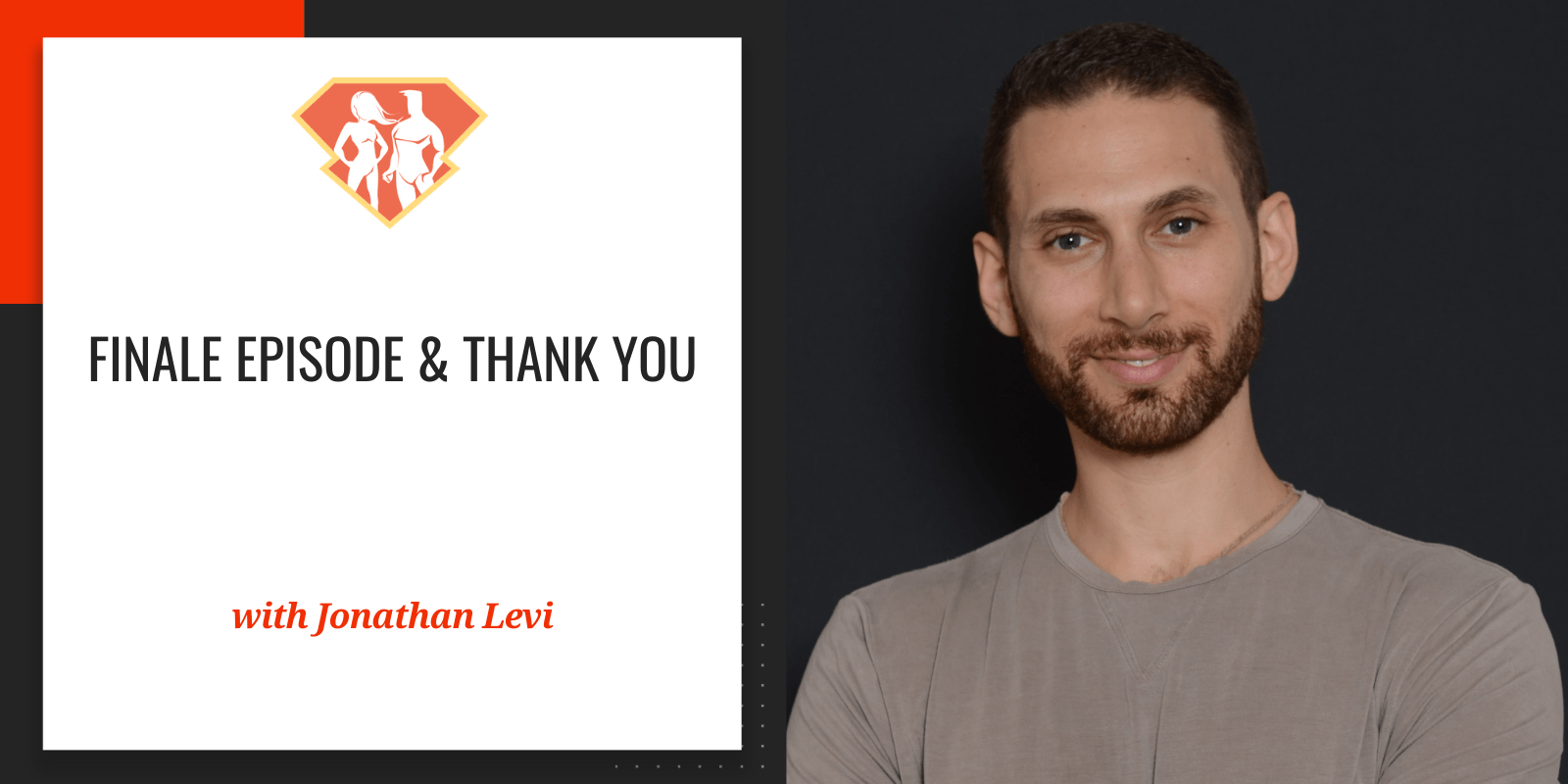




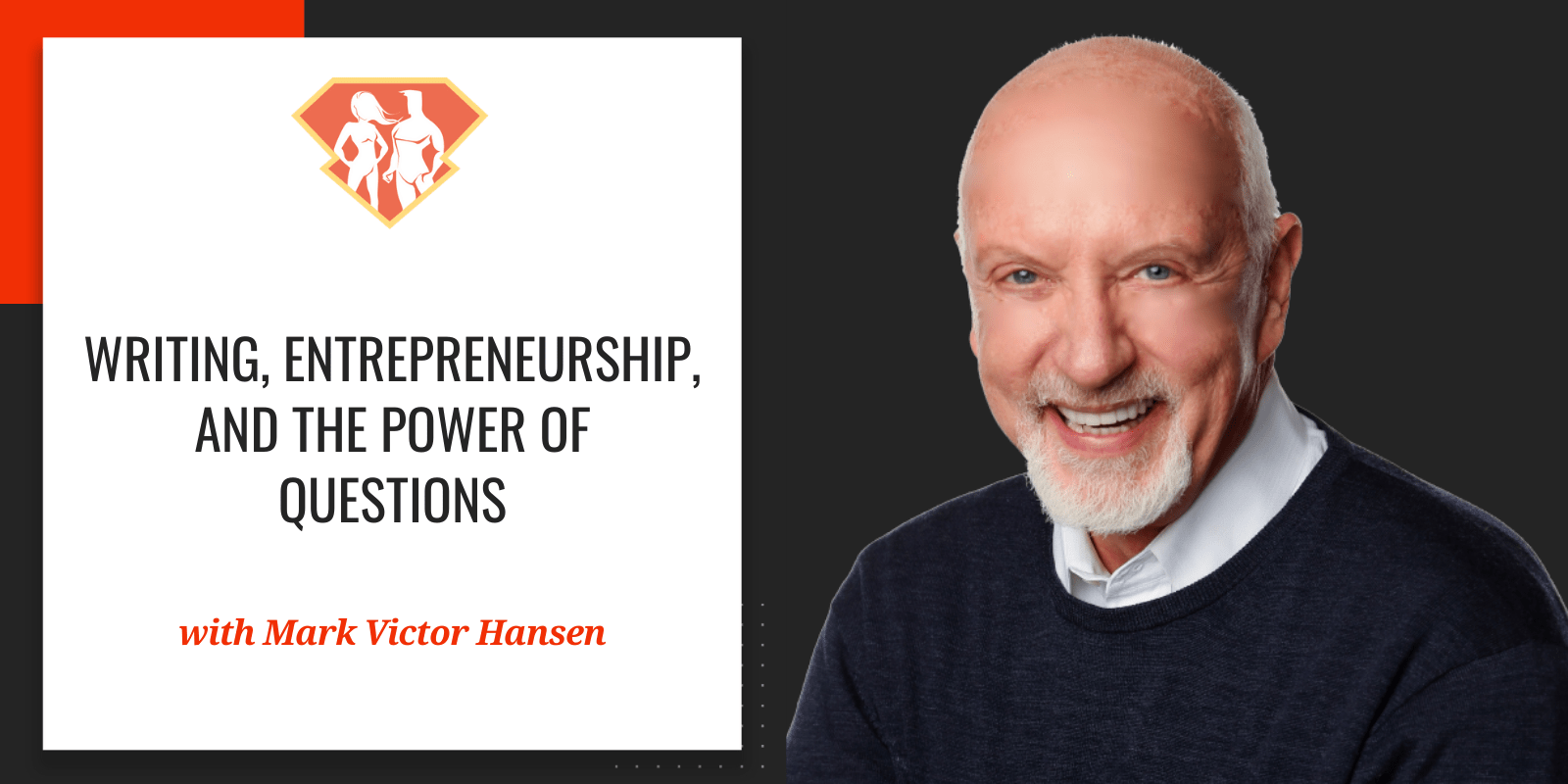

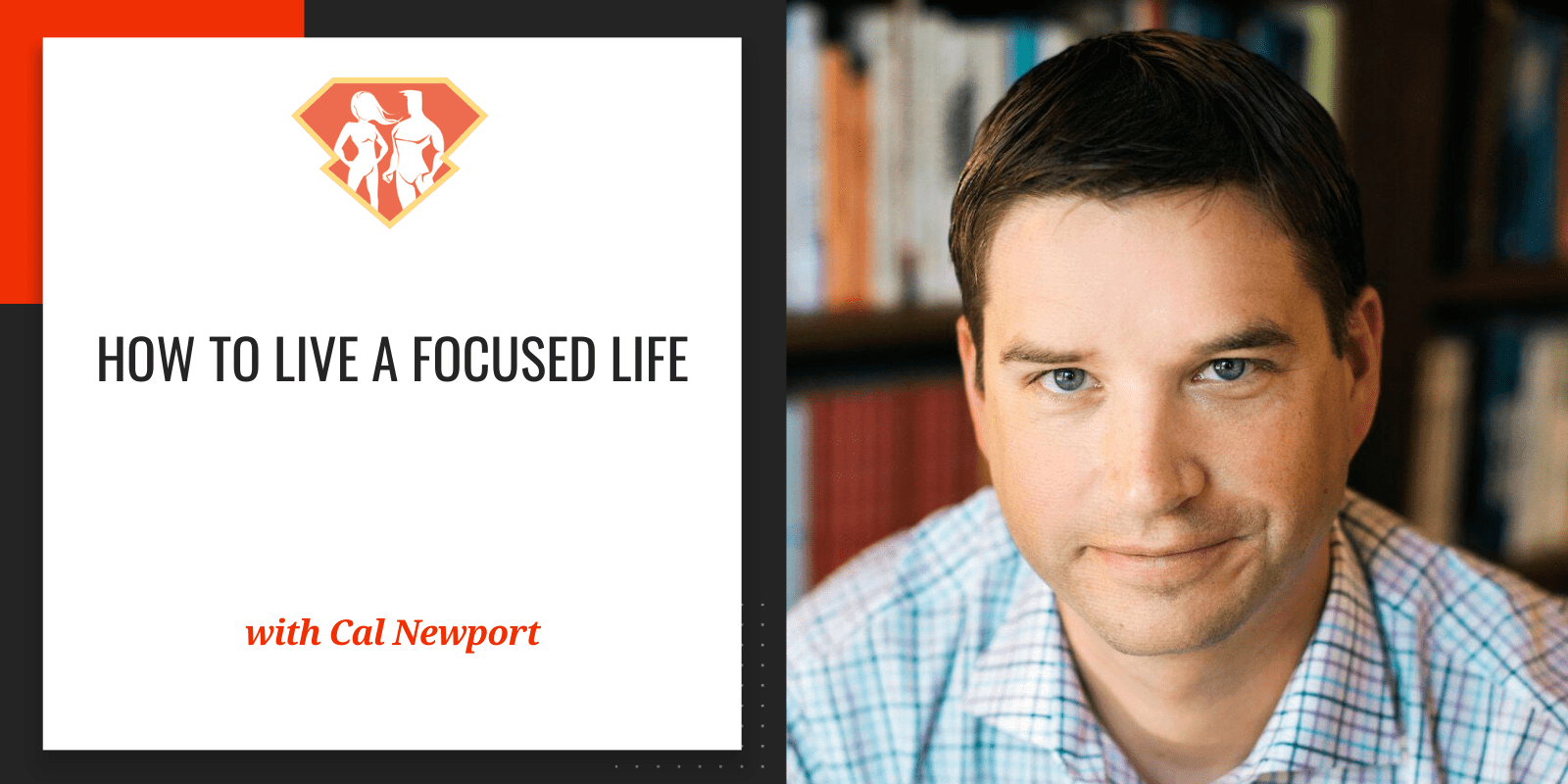

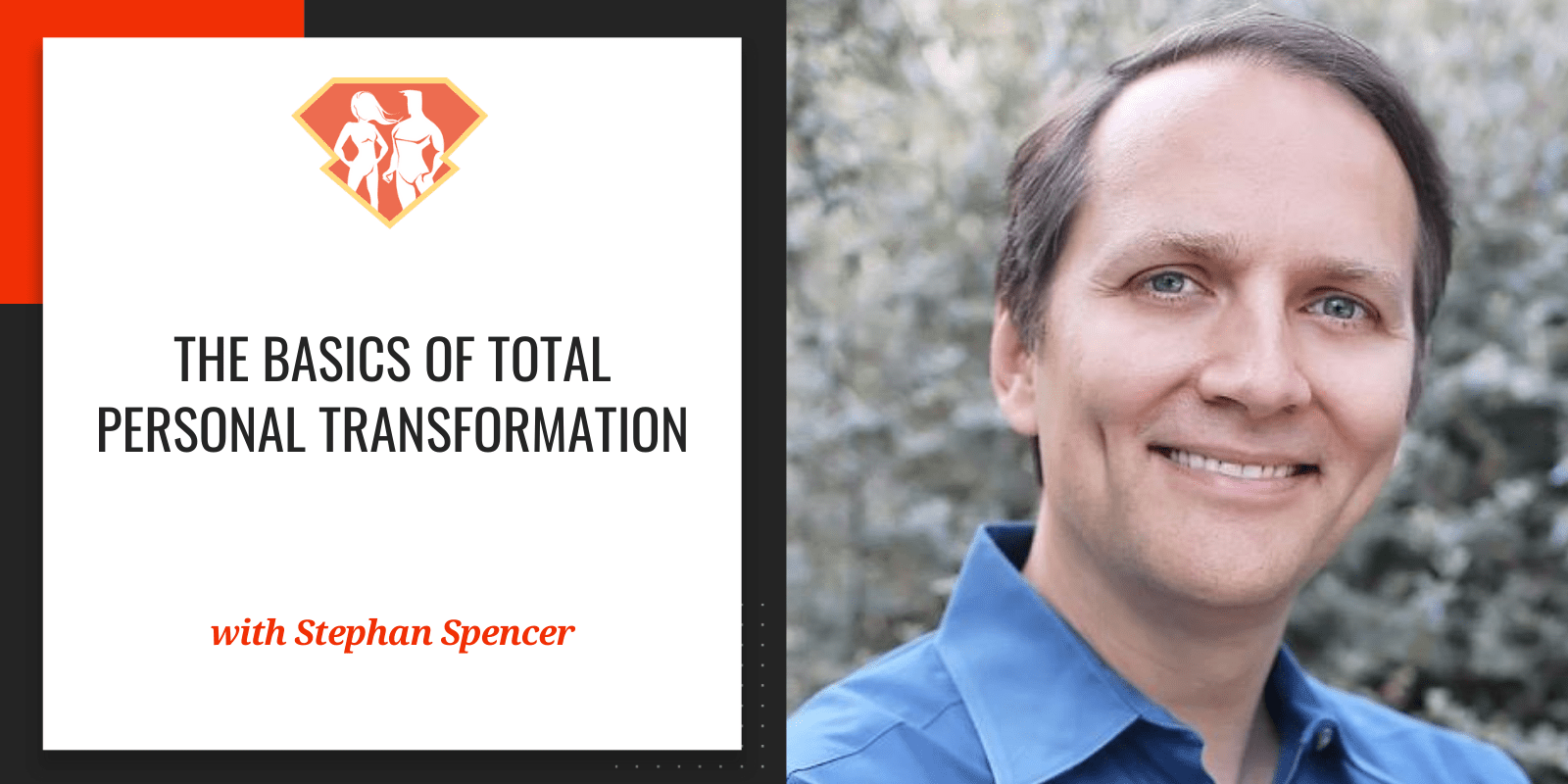
19 Comments
Thanks, I learned a lot of interesting things in past episodes.
loved th heart and the depth of the conversation. The way that Dr. Metivier shared from his enormous experience and insights was just amazing. Thank you Jonathan for doing this podcast!! 🙂
Great interview with Dr. Greg Wells! He mentioned a doctor from Colorado around the 42:30 point of the podcast, discussing turmeric and black pepper. I couldn’t make out the doctor’s name. Can you provide me with his full name and maybe his website or contact info. Interested in his products.
Thanks,
Rob
I am new here, and learning really fast.
Thank you.
Maybe oarts of the things he has to share are right, maybe not. If I look at him which impact his nurturing and living style has on himself I see a very old looking man! He is year 1973!! That is not old and he looks definitly much older!! If I would not know his birthyear I would guess that he is in his mid-60ies!! A bit concering for someone who claims his lifestyle is suitable for a long life, isn’t it?
Thanks in favor of sharing such a nice idea, post is good, thats why i have read it completely
Asking questions are genuinely good thing if you are not understanding something completely,
except this piece of writing offers good understanding even.
Excellent, insightful, efficient
This post is truly a fastidious one it assists new net
viewers, who are wishing in favor of blogging.
Thank you very much for this post. I think more people have to see it, to be very honest with you.
Nice post. Ilearn something totally new and challenging oon sites I stumbleupon on a daily basis.
It will always be helpful to read thhrough article
ffrom other authors and usee a littlke something from their web sites.
I like the helpful info you provide in our articles.
I wil bookmark your weblog andd check again herre regularly.
I’m quite certain I’ll learn plenty of new stuff right here!
Best of lluck for the next!
I wanted to thank you for this good read!! I definitely loved every little bit of it.
I have got you bookmarked to look at new things you post…
This is my first time pay a quick visit at here and i
am actually happy to read all at single place.
Hola! I’ve been following your web site for a while
now and finally got the bravery to go ahead and give you a shout out from Porter Tx!
Just wanted to tell you keep up the good work!
Keep this going please, great job!
This site was… how do I say it? Relevant!!
Finally I have found something that helped me. Kudos!
Thank you for the auspicious writeup. It in fact was a enjoyment account
it. Glance complicated to far delivered agreeable from you!
However, how can we keep in touch?
Hey There. I found your blog the usage of msn.
This is a really neatly written article. I’ll
make sure to bookmark it and come back to read more
of your helpful info. Thanks for the post. I’ll definitely comeback.